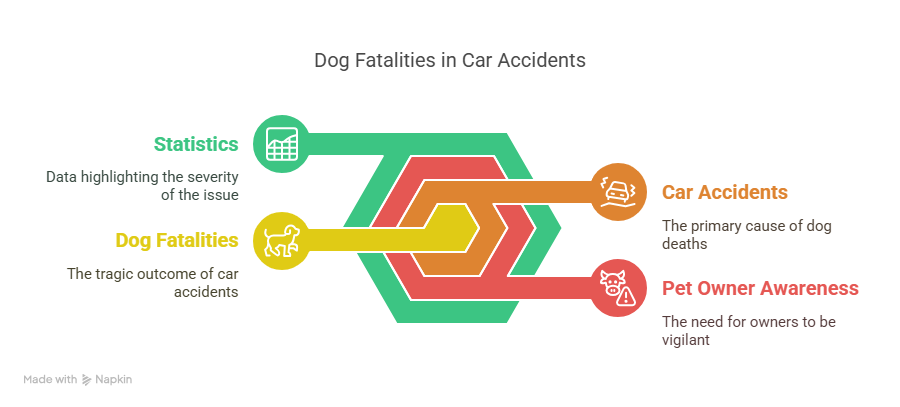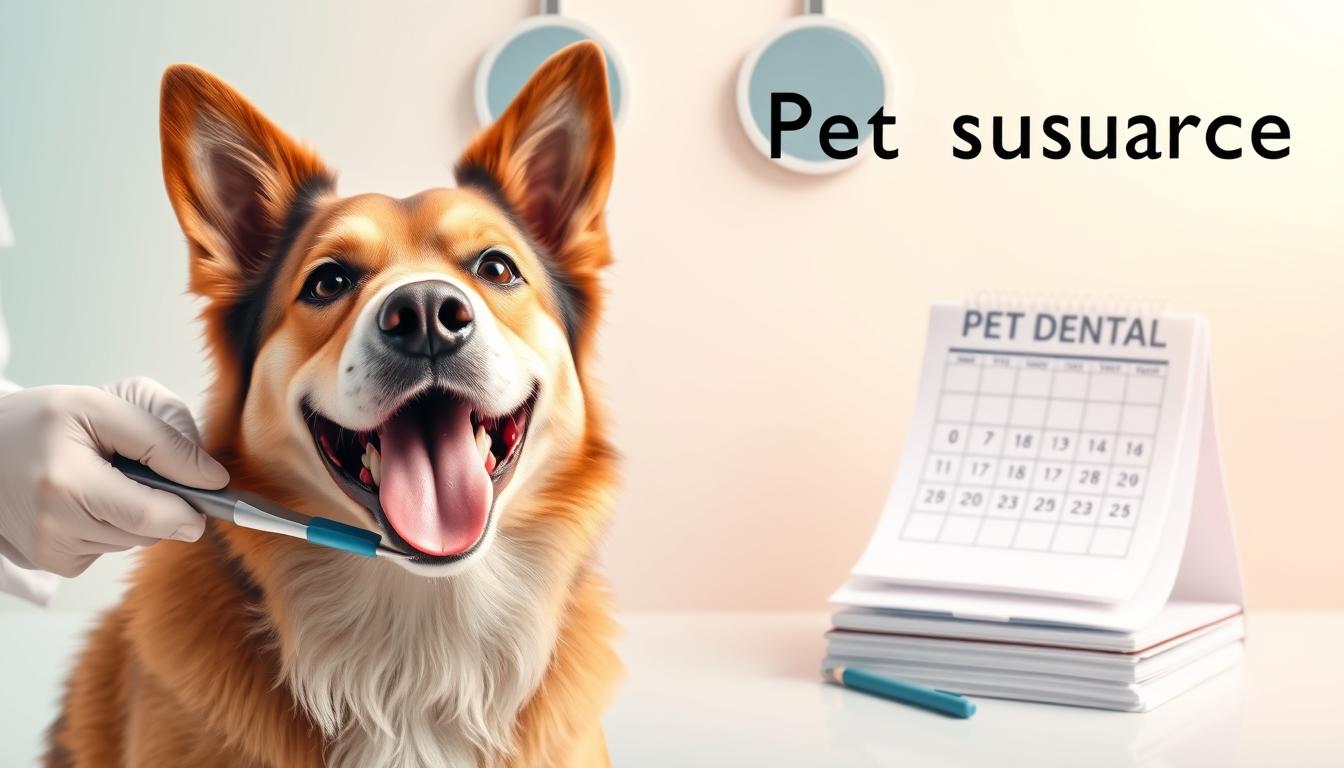“The greatness of a nation and its moral progress can be judged by the way its animals are treated.” Mahatma Gandhi
It is devastating to admit that dog fatalities in auto accidents are a brutal reality, even if we love our furry friends. Numerous dog deaths in auto accidents occur each year, sometimes as a result of avoidable situations.
It’s important to be aware of the dangers of travelling with pets. We can drastically lower the amount of dog fatalities in auto accidents by being aware of the risks and implementing the appropriate safety measures. The purpose of this essay is to clarify the concerning data and provide insightful advice on preventative actions.
The Startling Data: The Number of Dogs Killed in Auto Accidents
Numerous dogs die in auto accidents in the US each year, which brings attention to a serious problem that pet owners must be aware of. It is upsetting and enlightening to see the data on canine deaths in auto accidents.

Numbers of Dog Deaths Per Year in the US
In the United States, a startling number of dogs die in auto accidents every year. Approximately 1.2 million dogs are involved in auto accidents annually, with a considerable number of deaths, according to recent research.
Here is a breakdown of the expected number of dog deaths in auto accidents over the last several years to help put this into perspective:
| Year | Estimated Dog Fatalities | Cause of Fatality |
|---|---|---|
| 2020 | 18,000 | Crashes, Heatstroke |
| 2021 | 20,000 | Crashes, Ejections |
| 2022 | 22,000 | Heatstroke, Crashes |
Accident Types That Are Deadliest to Dogs
In a variety of auto accidents, dogs may get injuries or even lose their lives. Among the most frequent occurrences are:
- being thrown out of the car in an accident
- Being left in a hot vehicle and suffering from heatstroke
- being flung from an automobile and struck by another vehicle
Dogs may die from heatstroke in a matter of minutes, making it a particularly serious danger. Preventing such catastrophes requires proper restraint and never leaving a dog in a car alone.
The main reasons why dogs die in car crashes
In order to take preventative action, pet owners must be aware of the main reasons why dogs die in auto accidents. There are a number of reasons why dogs might die in car accidents. Dog owners should take proactive measures to safeguard their dogs and guarantee a secure travel experience by recognising these factors.
Dogs Without Restraints: The Greatest Danger
Inadequate dog restraint is one of the main reasons why dogs die in auto accidents. Unrestrained dogs are more likely to sustain injuries or lose their lives in crashes, abrupt stops, and rapid twists. Dogs that are not fastened may be flung around the car, which might cause serious harm.
Temperature-Related Fatalities and Hot Car Deaths
It may be fatal to leave pets alone in cars, particularly in hot weather.Heatstroke, which happens when the temperature inside a parked automobile increases quickly, is the cause of hot car fatalities. Even with the windows slightly up, dog owners must never leave their dogs unattended in a car.
Pet-Related Distracted Driving
Another major danger concern for dog owners is distracted driving. There is a higher chance of accidents when drivers are distracted by their dogs because they are less likely to pay attention to the road.Attempting to soothe an agitated dog, reaching for a pet, or letting a dog sit on one’s lap while driving are examples of pet-related distractions.
Practical Strategies to Keep Your Dog Safe While Travelling by Car
Knowing how to keep your dog safe on the road is more crucial than ever because of the increase in canine-related auto accidents. Having the proper gear, following safe procedures, and being ready for any emergency are all necessary to ensure your dog’s safety while travelling by automobile.
Appropriate Restraint Equipment: Crates, Carriers, and Harnesses
Using the right restraint devices is one of the best ways to keep your dog safe while travelling by automobile. This covers crates, carriers, and harnesses made especially for dogs.
- Harnesses: In the case of an accident, a dog harness that fastens to the seatbelt of the automobile may save your dog from being flung about or ejected.
- Carriers: Carriers may provide a secure and cosy environment for little pets. Make sure the carrier is properly attached and has enough ventilation.
- Crates: Crates may be a good method to keep bigger dogs safe and are appropriate for them. Verify that the box is stable and securely fastened within the car.

Positioning Yourself Safely in Cars
Your dog’s safety might be greatly affected by where they sit or rest in the car. Because of the possibility of airbag activation, the front seat is often regarded as the most hazardous area for dogs.
For dogs, the rear seat is usually the safest spot. If you have an appropriate restraint system, you may also think about utilising the cargo space if you drive a bigger car, such as an SUV or van.
| Position | Safety Level | Recommendation |
|---|---|---|
| Front Seat | Low | Avoid placing dogs here due to airbag risks. |
| Back Seat | High | Ideal for most dogs, using a proper restraint. |
| Cargo Area | Medium to High | Suitable for larger dogs with proper crating. |
Being Ready for Emergencies When Travelling with Dogs
When you travel with your dog, it’s important to be ready for any situations. Having a pet first aid kit, being familiar with basic first aid, and having a plan for emergency veterinarian treatment are all part of this.
- Bandages, antiseptic wipes, and any prescription drugs your dog may need should all be included in your first aid kit.
- Emergency Contacts: As you travel, make a list of emergency veterinarian contacts.
- Have a pet emergency plan so you know what to do if your dog gets lost or has an accident.
By adhering to these recommendations, you may drastically lower the dangers involved with driving your dog, making the trip safer and more pleasurable for both of you.
Conclusion: Keeping Your Dog Safe While Travelling
One of the most important steps in averting such tragedies is knowing how many dogs perish in auto accidents. canine owners may drastically lower the amount of canine deaths in auto accidents by being aware of the hazards and taking preventative action.
Your dog’s safety while travelling by car depends on using the right restraint devices, situating them safely, and being ready for any situations. You may reduce the likelihood that your dog will be in an automobile accident by implementing these precautions.
Responsible pet ownership, education, and awareness are necessary to reduce the number of canine deaths in auto accidents. You may lower the number of dog deaths in auto accidents and keep your pet safe on the road by adhering to the rules described in this article.




